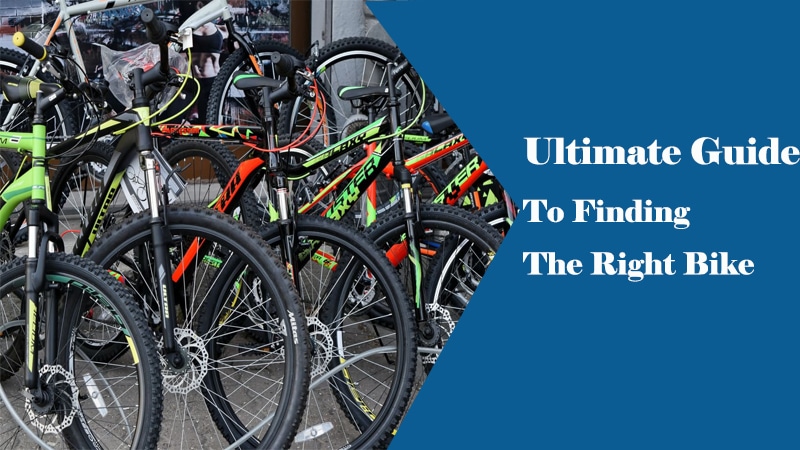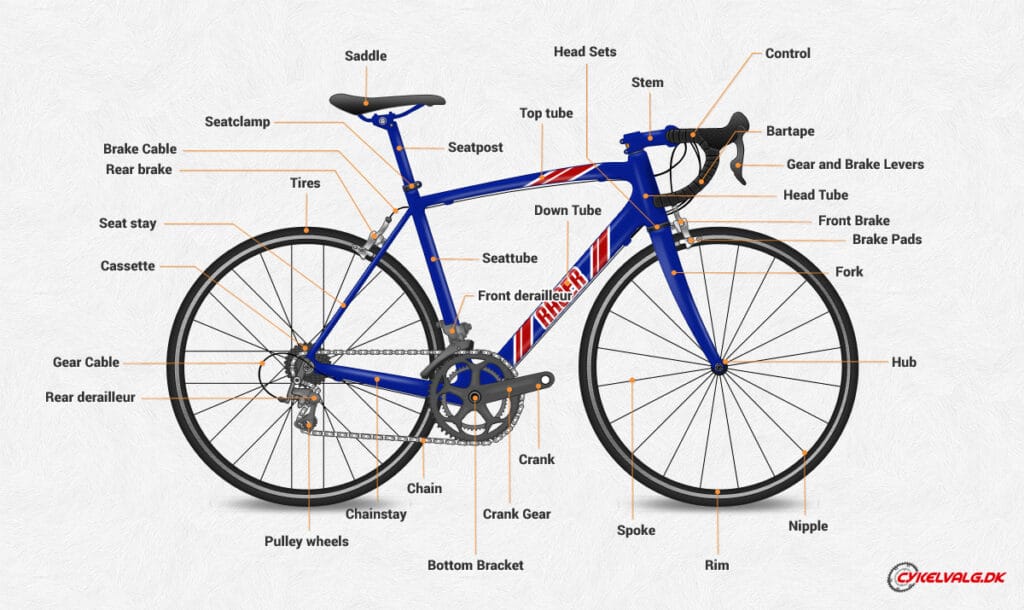Looking for a bike but stuck among loads of options? Don’t worry, choosing a bike best fit for you might be an endeavoring task but that’s exactly what we are here to help with.
These steps will lead you to choose the perfect bike for you.
Contents
Clear up your mind about what kind of ride you want!
Different kinds of rides require different bikes. Do you want to ride on pavements, or you want to tackle the trails on a nearby mountain? If you want to be on paved-surfaces then the road bike or fitness bike is perfect for you.
A city bike would be the best choice for commuting. If you want to be on both the pavements and the natural-surfaces, then the versatile gravel bikes are the best fit for you. For the off-road ride, sturdy mountain bikes are best. Narrow down the choices and zero in on the shortlisted ones which will set you in the right direction towards a brand new bike.
Keep your budget in view
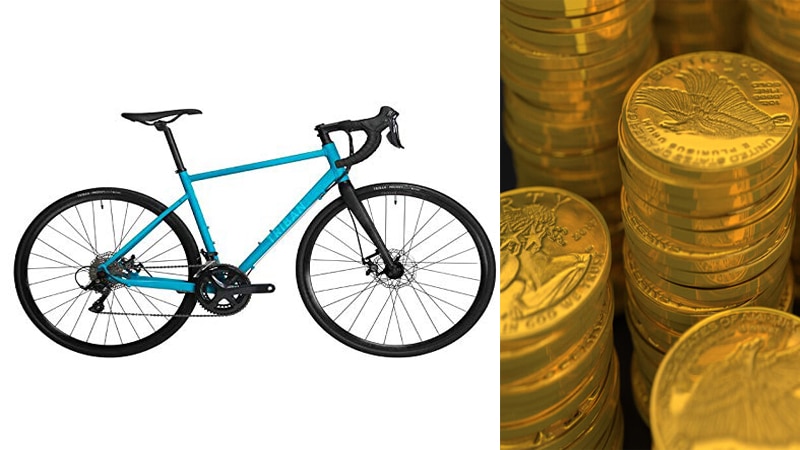
Working out your budget before buying a new bike is crucial. Choosing the right amount you want to spend on your bike comes down to your circumstances, however here are some general guidelines for you in deciding your budget:
- Do not go too cheap– Generally, a specialist bike comes under the range of $500 to $1000, with many costing more. As in the case of bikes, you get what you pay for so, going too cheap might decrease the quality of the bike as a $200 bike might be in your budget but it won’t last much.
- Compare the old and the new bikes- this will help you decide which will be the best fit in your budget with comparable quality.
- Keep the budget for extra accessories or parts you might want to add like the mudguards, lights, helmet, cheats, etc. included.
Using our guide will give you a clear idea of what kind of bike is within your price point.
Where to Buy from?
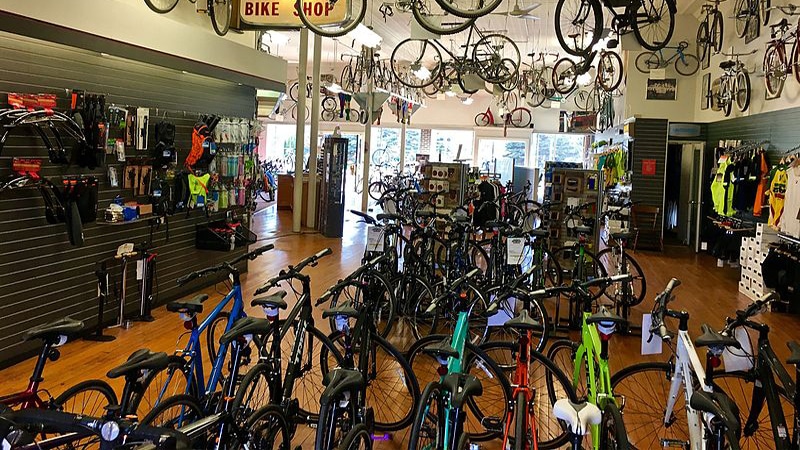
There are a lot of options out there to get your bike from but knowing what you want will be a decider point to curtail down your purchase points so, here we recommend you buying online with a buying guide to give you a direction than going to a store spending more bucks and commute as well.
Visit our site to get your desired bike. We assure you of having quicker delivery, lower prices, and a better shopping experience with us than spending more bucks on a store. We don’t let you rule out your custom purchase of a bike.
Size up your bike
Choosing a size best fit for you is quite crucial for a safe and comfortable ride. If the size won’t be proper, it might lead to an injury as well. Many bikes come in five or more sizes, so there should not be any guesswork.
Always decides your bike size based on some important factors like inseam length, height, flexibility, handlebar height, riding experience, saddle positioning, and cleat positioning (if required).
The height of the bike must be appropriate to your height as well. There are online calculators available for choosing the right size for you, which are quite acceptable. Your bike will be set up according to it- the wheels, tires, and the frame.
Option One
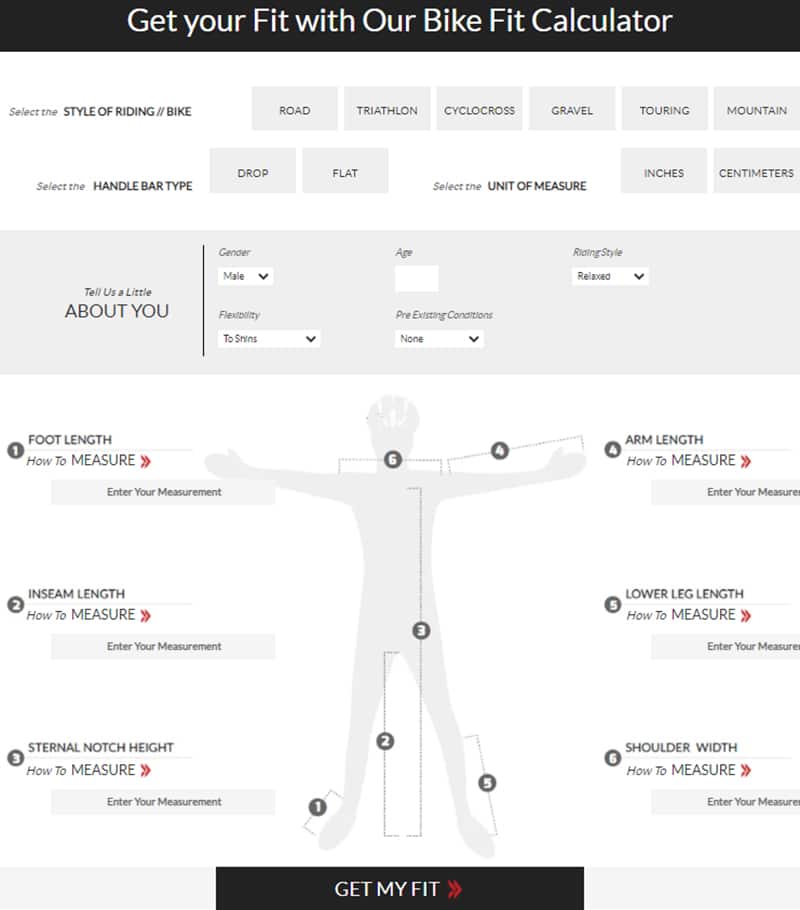
We recommend you to use this caculator to find the best bike size for you.
Option Two
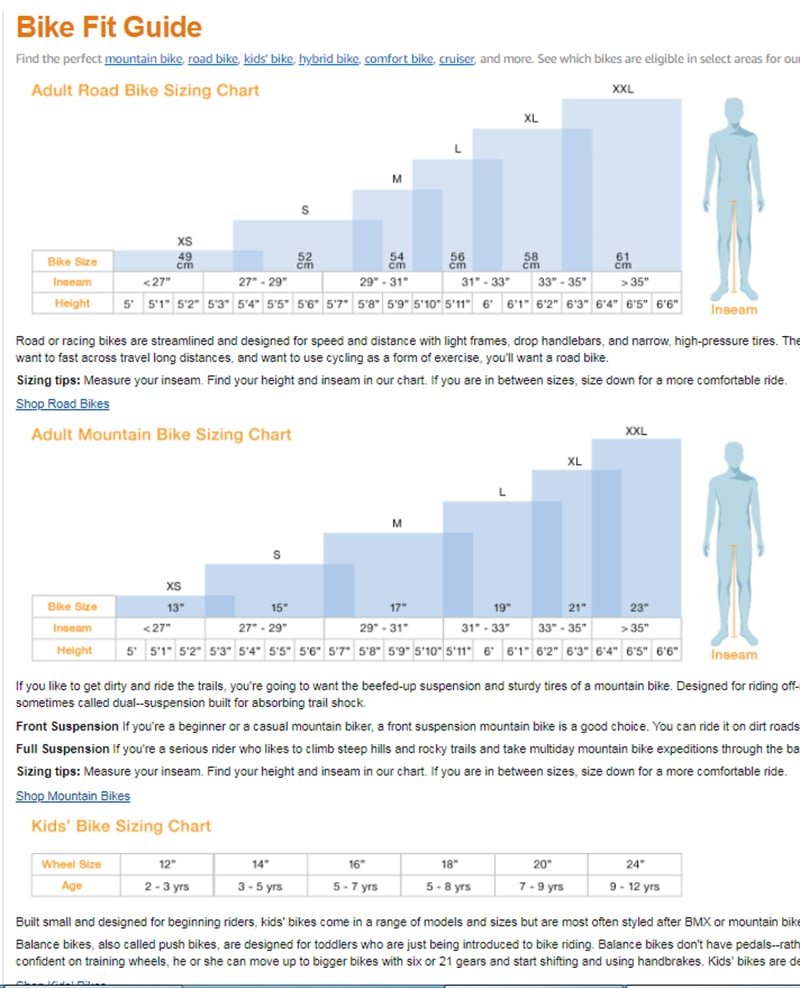
You can check Amazon Bike Fit Guide to find out the right bike size.
Add-ons in extra Parts and Accessories
If you like to adorn your bike with some extra accessories or parts you can go on adding some extra lights, a helmet for your safety, mudguards to keep your bike and clothes clean and cheats, etc.
These parts or accessories do not come with the bike by default because often a bike is sold with the parts necessary to ride it only and it’s up to you to assess that what you want to add. In some countries or areas, Helmet is required by law so if you belong there, buying a helmet is a necessity for you.
Paddles and biking shorts can also enhance your riding experience. Some other common add-ons for your bike can be a Bottle holder(cage), pumps, a lock, different paddles or saddles, and a cycle computer.
Bike Size Chart
Road Bike Size Chart
Road Bike Size Chart for Female
| Height (cm) | Road bike size (cm) |
| 148 – 152 cm | 44 cm (XX small) |
| 152 – 160 cm | 48 cm (X small) |
| 160 – 168 cm | 51 cm (small) |
| 168-175 cm | 54 cm (medium) |
Road Bike Size Chart for Male
| Inseam (cm) | Height (cm) | Road Bike Size (cm) |
| 71 -75 cm | 152 – 160 cm | 48 cm (XX small) |
| 75 – 79 cm | 160 – 170 cm | 51 cm (small) |
| 79 – 83 cm | 170 – 174 cm | 54 cm (medium) |
| 83 – 85 cm | 174 – 180 cm | 56 cm (large) |
| 85 – 89 cm | 180 – 188 cm | 57 cm (X-large) |
| 89 – 92 cm | 188 – 195 cm | 60 cm (XX large) |
| 92 + cm | 195 + cm | 63 cm (XXX large) |
Mountain Bike Size Chart
Mountain Bike Size Chart For Female
| Height (cm) | Mountain bike size (inch) |
| 148 – 158 cm | 13 – 14” |
| 158 – 168 cm | 15 – 16” |
| 168 – 178 cm | 17 – 18” |
| 178 – 185 cm | 19” + |
Mountain Bike Size Chart For Male
| Inseam (cm) | Height (cm) | Mountain bike size (inches) |
| 71 -75 cm | 152 – 160 cm | 15” (X-small) |
| 75 – 79 cm | 160 – 170 cm | 16” (small) |
| 79 – 83 cm | 170 – 174 cm | 17” (medium) |
| 83 – 85 cm | 174 – 180 cm | 18” (medium) |
| 85 – 89 cm | 180 – 188 cm | 19” (large) |
| 89 – 92 cm | 188 – 195 cm | 20” (large) |
| 92 + cm | 195 + cm | 21” (X-large) |
Bike Size Chart For Kids
| Wheel size | Age | Height | Inseam |
| 12” | 2-3 | 2’10”-3’4” | 14-17” 35-42 cm |
| 14” | 3-4 | 3’1”-3’7” | 16-20” 40-50 cm |
| 16” | 4-5 | 3’7”-4’0” | 18-22” 45-55 cm |
| 18” | 5-6 | 3’9”-4’3” | 20-24” 50-60 cm |
| 20” | 5-8 | 4’0”-4’5” | 22-25” 55-63 cm |
| 24” | 7-11 | 4’5”-4’9” | 24-28” 60-72 cm |
Hybrid/ City Bike Sizing Chart
| Your Height | Your Inseam Length | Bike Frame Size | Descriptive Sizing |
| 4’11″–5’3″ | 25”–27” | 13 – 15 inches | XS |
| 5’3″–5’7″ | 27″–29″ | 15 to 17 inches | Small |
| 5’7″–5’11” | 29″–31″ | 17 to 19 inches | Medium |
| 5’11″–6’2″ | 31″–33″ | 19 to 21 inches | Large |
| 6’2″–6’4″ | 33″–35″ | 21 to 23 inches | Large/XL |
| 6’4″ and up | 35″ and up | 23 inches and up | XL |
Decide whether to buy an Old or New bike
Buying a new bike can be daunting with so many options out there so maybe you would like to test a certain type of bike from the second-hand ones. Many second-hand bikes are available in good condition.
But, getting excited about saving bucks in buying a second-hand bike will not be beneficial for you as it will take away the chance to have a good and comfortable riding experience.
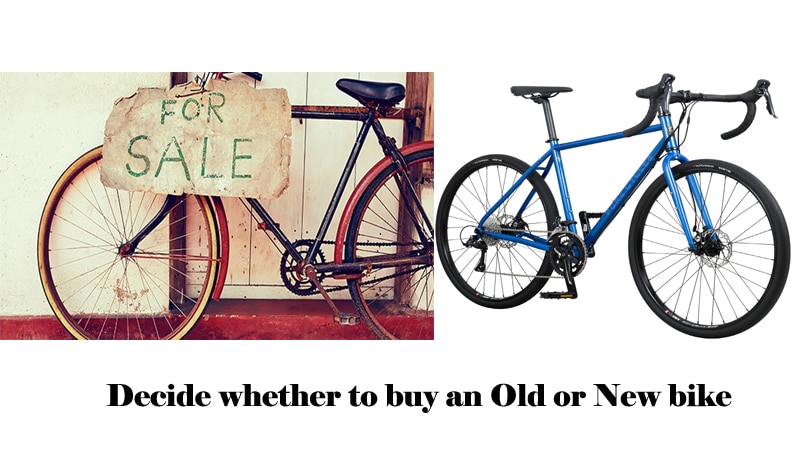
Our recommendation is to always buy a new bike as no one has time and money to spend on a bike again and again. Once, you choose your best fit you will not need to spend more money buying another bike or changing it. For this, the basic knowledge about bikes according to different kinds of rides is listed herein for you.
Buying new-pros:
- Warranty available– New things always come with a warranty if not then you should ask for it.
- Buying assistance-When you buy a new bike, you will always get assistance to help you choose your perfect fit.
- New is new-Its your bike, it’s new and no one else has used it.
- Accessories and parts can be added-Often when you buy a new bike, you can add several new accessories or parts along with it like changing the tires, adding racks, etc. You might get a discount as well when buying things collectively in bulk with a bike.
Buying new-cons:
- You may not need a brand new bike if not a necessity.
- Buying new can be expensive than buying old.
Buying old-pros:
- Cost effective-It might be a good option for some people on a tight budget, moving house, or dealing with other expenses of life.
- You can buy the latest model of the season in the second-hand options.
- Safety- Older bikes might be less desirable and attractive for the thieves and you will not feel robbed by them. An ugly bike and a decent bike lock can be a theft-prevention act.
- You get a bargain– This can save you some bucks with a good purchase.
Buying used-cons:
- The bike may be stolen one– many thieves stole the bikes and sell them to the bike shops and you might get one of them.
- These do not come with a warranty-you bought it as it is with all warts and issues.
- It becomes difficult to spot issues in it. There might be cracks in the frame and some other well-hidden damage.
Anatomy of the Bike
You should have a general basic knowledge about the anatomy of the bike so that you can get together a sturdy bike. The frame and fork materials are essential components of a bike.
Frame:
The frame is the core and heart of the bike. It forms the skeleton of the bike. The frame is made of steel, aluminum, and rarely titanium. Choose the frame wisely because the design of the frame referred to as the frame geometry must be strong.
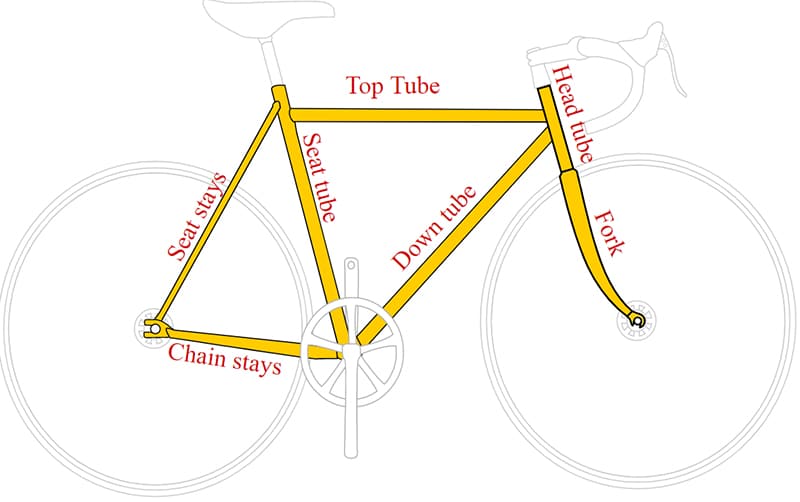
It is designed in a specific way to know where the seat is to be placed, how the center of gravity is placed on the bike, and where the tension and pressure are applied.
- Steel– This is the most popular and traditional frame material, used for centuries. It will give a steady and comfortable ride but it is heavier than the other materials.
- Aluminum-It is a light-weight material and alternative to the steel ones. They are popular because of this property and stiffer than the steel so do not absorb shocks and bumps.
- Titanium– It is rare, sturdy, and long-lasting but is pricey. If you can afford it then you should go for it.
.A quality frame with cheap components can cause issues for you.
Drivetrain:
The choice of equipment can be mind-boggling to those who are new to the world of biking. Drivetrains are the important components of the bike because they contain the bits and pieces that are used to push or pull the bike along.
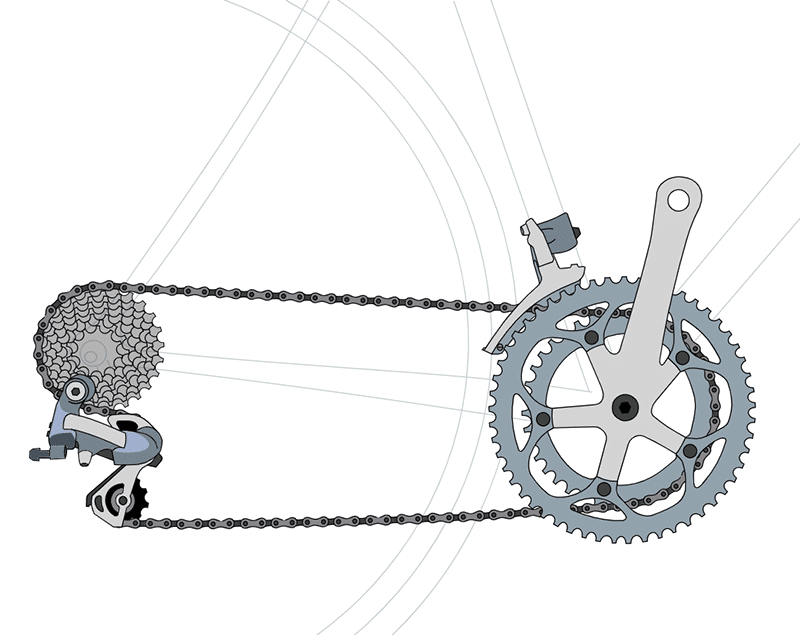
It includes the cassette(cogs), derailleur, chain, chainrings, cranks, and pedals. Get this of good quality because changing a drivetrain can cost up to $100.
Cranksets and Gearing:
Choosing a crankset gearing can be a quite challenging task for the riders. There are two of’em available- the standard and the compact cranks. The main difference in them is the size of the chainrings they mount because they have different diameters of the bolt rings. The gearing in both the cranksets is also different.
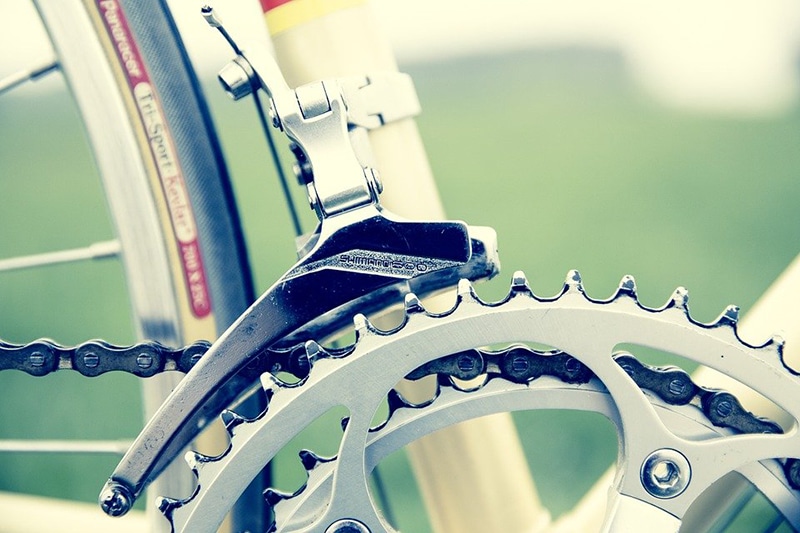
A standard crankset has a 53 or 52-tooth outer chainring and a 39-tooth inner chainring. This is the default setup of a chainset and preferred by most riders while the compact crankset has a 50-tooth outer chainring and a 34-tooth inner chainring which indicates that the gears are lower and easier to turn.
It will lead you to a shorter distance per paddle revolution than a standard crankset gearing. If you want a mountain bike you should go for the compact crankset because they allow you to keep moving up the hill, quite slowly, at a higher cadence (the number of the pedal revolutions per minute). These also put less pressure and stress on the knees.
The road bike usually has a set of three cranksets which provide a wide range of gears, 27 different gears, for the entry-level bikes. This is the most common type of configuration and is best for beginner cyclists.
Now that you have understood all the important features and points of the crankset, you should be able to choose the right set for your bike. This is the total number of cranksets gearings and the cassettes that a bike can have.
Group sets:
These are the parts of the bike that keep the bike moving and drives or stop the wheels. It includes the cassette, chainset, shifters, brakes, bottom bracket, chains, derailleurs, and cables.
If you like the group set of a certain bike of a brand, you can have it customized as such and we are here to help you with this.
Wheels and Tires:
The wheels consist of the rubber tires, the rim, and the hub, which connects them to the rim. Changing tires time and again will become a headache if you do not choose correctly in the first place. Tires provide stability and balance to the bike.
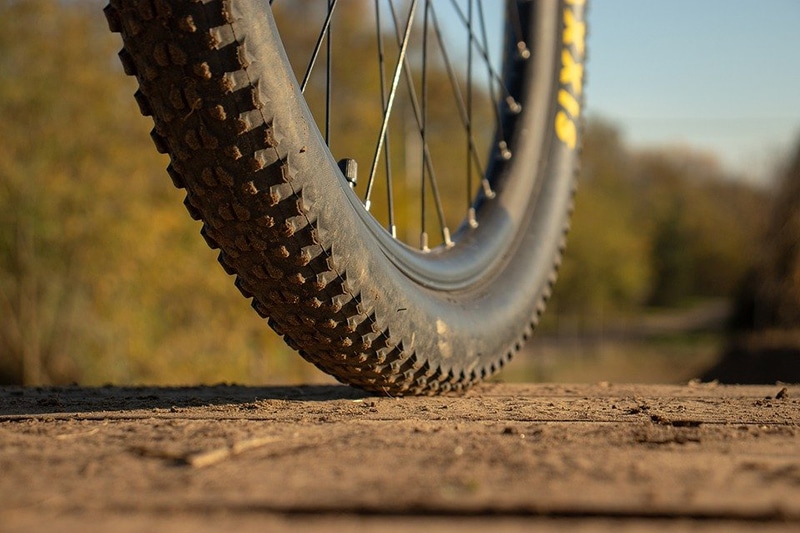
The wheel should be leveled so the movement of the tire is easy and fast. The wheels of your bike affect your ride in three ways: the weight of the wheels, How much the bike accelerates or how they carry their momentum, and the aerodynamics.
Tires are also very important. They make your ride smoother on the road. Good quality tires ensure greater performance along with greater, smoother commute at sharper angles and also assist you in stopping quickly on the road.
Keep checking your tires occasionally to ensure that the tread has not worn out, they need the care to ensure prolonged quality performance.
Suspensions:
Suspensions are an important component for mountain bikes especially. They are the front and the rear hydraulic shocks to absorb the bumps and jolts on the rocky, rough paths. They provide traction, improve control and comfort on the rocky, potholed, and rooty paths.
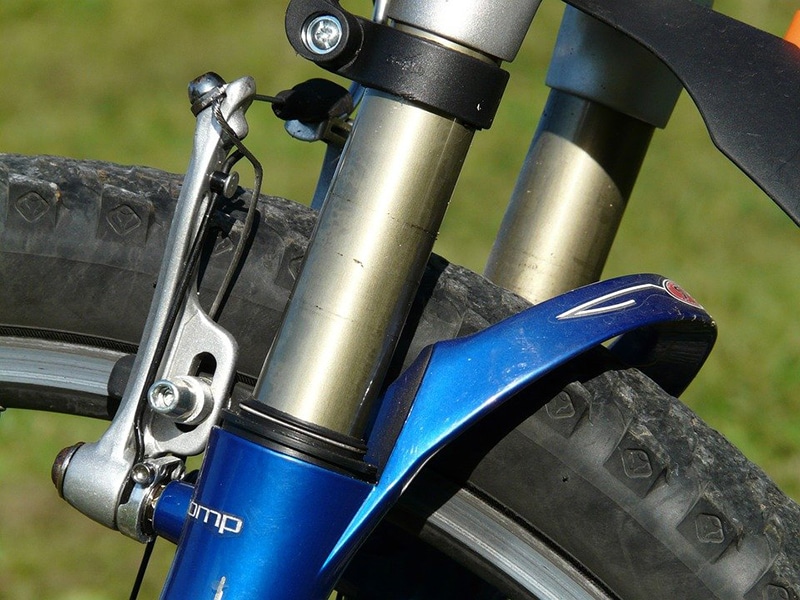
The rockier the path, the more suspension you need. Lighter suspensions are pricey and are adjustable. Now the problem here is to select the right suspensions at the right price. Here are some points to keep in mind while buying suspensions for your brand new bike:
- Lighter in weight: The suspensions must be lighter in weight to absorb more shock which is achieved by moving from a coil to the air spring. This is possible when the suspensions are adjustable.
- Build quality: High-end suspensions and more versatile with smooth adjustments. Their compression and rebound adjustments enable the suspensions to be fine-tuned and so that they suit your weight, terrain, and riding style.
- Smooth quality: Seek for quality suspensions that ensure a smooth ride. How will you know which suspensions provide a smoother commute? Comparing the prices is a great option and a reliable guide to doing so. The expensive ones provide a superior experience to an inexpensive one.
Pedals:
Pedals give the driving force to the bike so they must be compatible with the bike and your biking shoes. People not only prefer good pedals but they also buy biking shoes with them. So what kind of pedals should you go for? There are generally two kinds of pedals: Flat pedals and clipless pedals.
Choosing the right pedals for your bike depends upon your kind of ride. The clipless pedals have cleats on the bottom which secure the shoes to the pedals. But you need to make sure that the pedals, cleats, and shoes work as a system providing the best support and enough force to ride the bike.
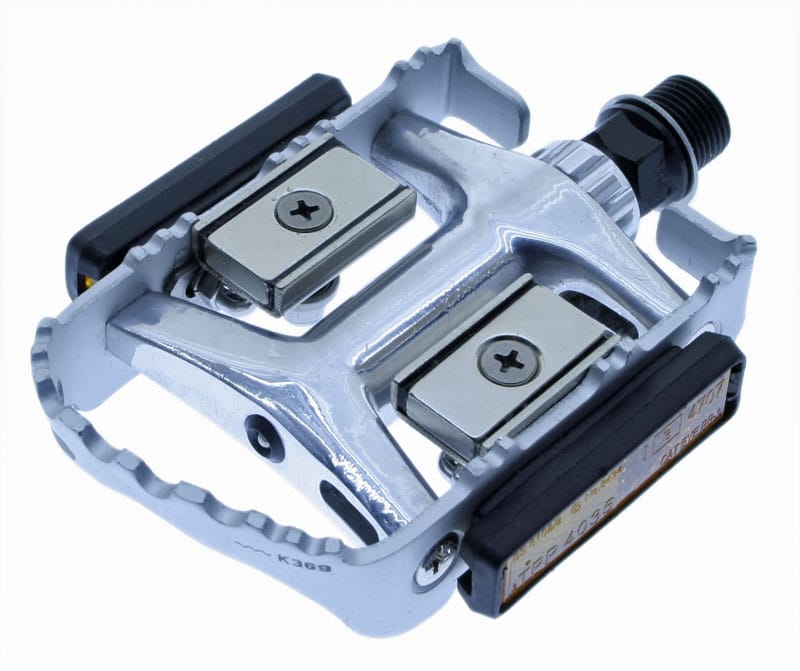
Keep the shoe-pedal compatibility in mind while choosing the pedals. The flat pedals give you ease and maneuverability while riding. They provide you with a flat, free platform. We are jotting down some of the main considering while choosing the pedals for your bike:
- Decide on the shoes you want: The types of shoes dictate the type of pedals you want to get. The flat pedals are the best because you can wear regular street shoes with them as well.
- Assess your riding: Before buying the pedals, always assess your riding whether you are a beginner or an expert rider. We recommend going for the flat or the mountain bike pedals if you are a beginner. If you are easy with the clipless pedals, only then go for them.
- Ease or effective control: If you want to be easy while riding with feet free without and support it cleats so that you can easily lift your feet the go for the flat pedals. The clipless pedal choice will be for those riders who want to have effective control and support during riding.
Brake levers and Gear Shifters:
Gear shifters help to shift from one crankset or cassette to the other. This shifts the bike to different gears. This mechanism should be working well, in this way it will provide perfect shifting and smooth performance which will save you from hiccups during gear shifting.
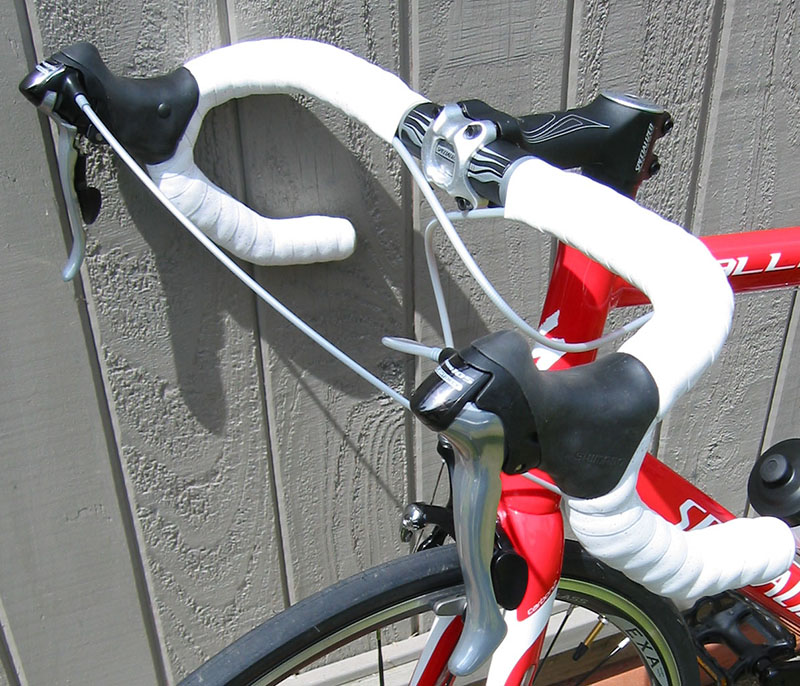
The gear shifters form the interface on the bike. Their availability is in the form of thumb switching, which helps in changing the gear which suits your terrain.
Talking about the brake levers, these are the show of the bike as you hold them for the time of riding the bike. They should be comfortable to hold, as anything with a bad feeling to the hands doesn’t give a good experience.
Their feel on the handlebar is very important so do not cover them with anything hard or too soft to cause sweating in the hands.
A whole load of basic knowledge about the bikes is jotted down for you to help you make the right decision while buying a bike for yourself.
Understanding the types of Bikes
The market is full of options either in the bicycle store or the online stores. However, buying online with this much guidance will be the best option for you but before that knowing about several types of bikes available is crucial as well. This will save you time and money and will save you from the hassle of going to a bicycle store.
Road Bike:
Road Bike seems to be the best option for daily commute by its name but that does not make it the right pick for you. Road bikes are racing bikes that are built by keeping in mind to features-the stiffness of the bike and the lightness of the bike.
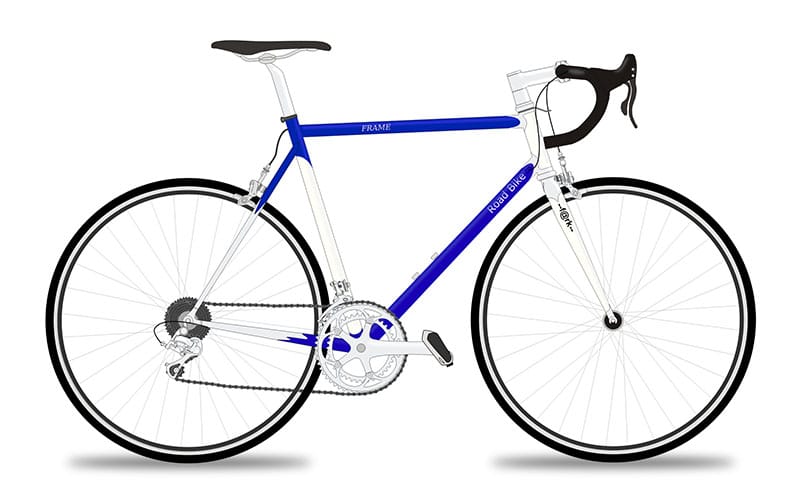
These bikes are used for a shorter duration of time and fast rides. As per their design, they are used to ride on sealed roads, these are among the most efficient bikes.
The road bikes have a beautifully sleek design with skinny tires and the handlebar curling back towards the rider at the bottom. the handles have a solid grip. There are many types of road bikes but the most common are Endurance road bikes and Competition bikes.
The difference between these two is in the types of brakes, frame geometry, comfort, and tire clearance (the distance between tire and frame).
Competition bikes are designed keeping speed in mind. They have the lower handlebar with a high seating position due to which the rider leans forward giving you more of an aggressive position while keeping you out of the wind. Typically, they have harder gears and stiffer frames.
The Endurance bikes give you a more comfortable ride because of an upright position. The aerodynamic drag on the rider reduces. Giving you easier gearing and a smoother ride, the endurance bike should be your choice if you are a beginner rider and want to have a safe, smooth nice ride.
The endurance bikes are designed keeping in mind social and fitness-based cycling. Most of the brands sell endurance bikes more than competition bikes.
Road bike pros:
- Road bikes look cool!
- Built for distance-Less aerodynamic drag, smoother ride.
- Built for speed-You will get to your destination faster.
- Racing-Intended for racing purposes as well.
- The culture of cycling- Some countries have a racing culture around it and you might want to make new friends while cycling so this fancy road bike will help you ride with them with confidence and safety.
Road bike cons:
- Expensive-Road bikes are generally expensive than other commuter bikes.
- Only suitable for the sealed roads.
- Limited Grip– Due to its thin tires it can be unsafe on wet roads which also indicates limited grip.
- Not so comfortable road bikes are often less comfortable than the other bikes due to their saddle and handlebar positioning.
Mountain Bike:
The mountain bikes offer more choices than any other bike. They are famous for the presence of the suspensions in them. If the suspensions are absent, then they would be rigid and may cause an accident. The mountain bikes are perfect for off-road riding.
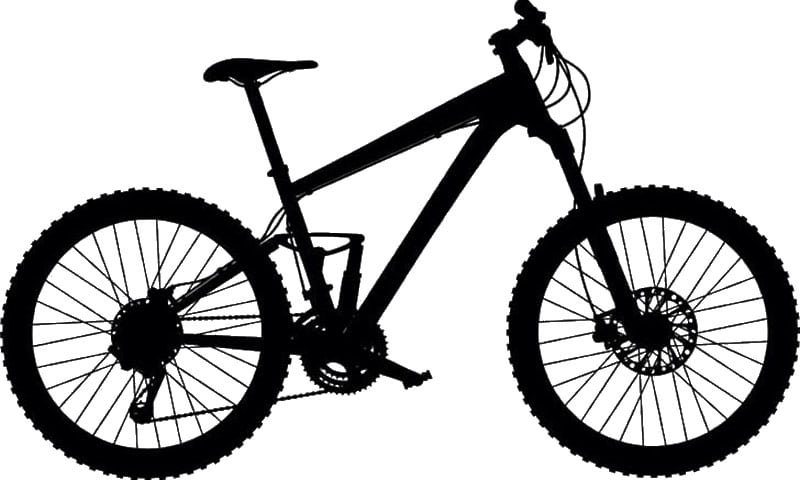
It is an all-purpose bike and comes with shock absorbers as the path on the mountain or hilly area is not rocky and rough. A mountain bike (MTB) comes with single or dual suspensions. They have sturdy brakes that are used to handle the roots, mud, holes, dirty rails, rocks, and other obstacles. They can also handle steeper pathways due to their lower number of gears.
The mountain bike terrain can be single track, double track, and the mountain bike terrain park. It is indeed the way to tracking and getting closer to nature. The difference between the mountain bikes from the road bikes lies in the following features:
- Have fatter tires with the rugged tread for stiffer and safer off-road terrain.
- Have an upright position to sit comfortably and enjoy the scenic views of the mountains.
- Shock absorbers(suspensions) bring more of a comfortable ride by absorbing all the bumps and jolts during the ride.
Mountain bikes with front suspensions are referred to as the Hard Rails while the ones with both the front and rear suspensions are known as the Dual or Full suspension bikes. With all these features, Mountain bikes are also suitable for ridding for the paved or flat terrain but they are not as fast as the road and other bikes due to their rugged tread.
Many manufacturers design their bikes based on different mountain biking styles which help decide on the type of bike you want:
- Downhill/Park: This type of terrain is done in the lift-serviced bike parks like in the ski-resorts during the warmer months. You use the heavy, sturdy, and tough type of Mountain bike and also wear full-face and body armor to protect yourself from the high-speed fall.
- Cross-Country bike: This style of biking is competitive and requires a special emphasis on climbing prowess. Bikes tend to focus on efficiency and lightweight. This is typically fast riding and requires a lighter bike.
- Dirt Jump Bike: This style of biking is performed on the BMX or Motorcross style bikes. They are lighter with robust wheels and frames to perform tricks and jumps efficiently without getting the saddles in the way or damaging the bike.
- All-Mountain/Enduro: For this kind of style the bikes are made lighter and sturdy enough to ride uphill. They are designed to perform well no the steeper descents. This is a competitive and challenging style of biking requiring an untimed up-hill and timed downhill racing competition.
- Fat Biking: These are great choices for beginner mountain biking terrains. These fat-tire bikes are the newest addition to the biking myriad and are a lot of fun to ride on. These bikes are used for traction through heavy sand and snow.
Mountain bike-Pros:
- Suitable for many styles of riding: The MTBs can be used to ride on sealed, paved, or rocky/hilly pathways.
- Increased Stability: They are more stable than many other bikes out there.
- Racing: The mountain bikes are also used the uphill and downhill racing along with many other racing competitions like Olympic Sports and other events.
- Low risk of punctures: Due o their fatter thicker tires, the mountain bikes have a relatively low risk of punctures but this depends entirely on the quality of tires.
- Beginner-friendly: The mountain bikes are quite a beginner-friendly along with comfortable.
- Fun rides in hilly rocky terrain: These bikes are a source of recreation and make tracking more fun in the forests, on the mountains, hills, and nature parks.
Mountain bike-cons:
- Requires protective gears: These bikes require complete protective gears for the face, hands, and body armor as well as the pads, gloves, helmet, etc. if you are riding in a rocky and rough area.
- High Maintenance: The mountain bikes require high maintenance and care if you are riding in wet and muddy terrain.
- Heavier and Slower: These are heavier and slower than many bikes.
Commuter or Hybrid Bikes:
The hybrid or commuter bikes got their name due to their ride somewhere between the mountains and roads. These are also known as ‘comfort or fitness bikes’ and the modern-day bikes are called recreational fitness bikes.
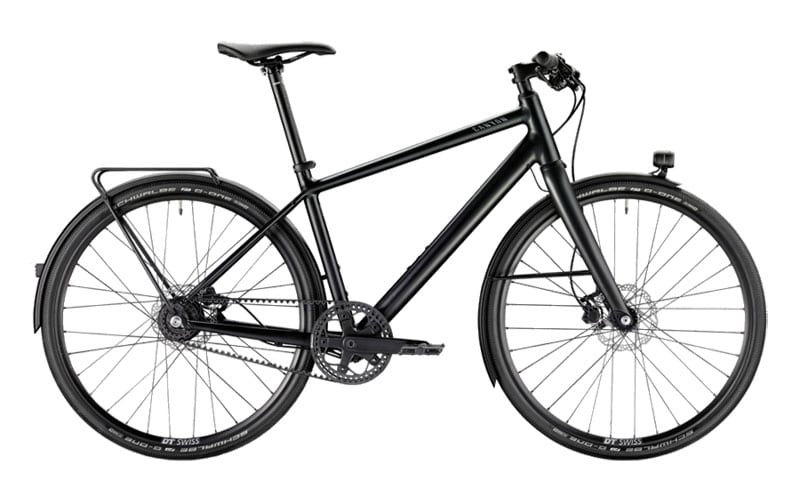
Commuter bike-Pros:
- They have one of the most upright positions available.
- Comfort-The hybrids are a mix of several bike types and cannot be described completely. Their flat handlebars, upright position, comfortable saddle, and disc brakes make them well-suited for cycling in urban traffic.
- Cheaper– Entry-level road bikes are costly than entry-level hybrids.
Commuter bike-Cons:
- Slow and Heavy- Due to their rolling resistance and weight they are heavier and slower to ride than most slender bikes.
- Not suitable for racing.
- If you prefer recreational or comfortable riding over competition and speed then we recommend you buy this bike.
Cruiser Bikes:
If you are looking for the most comfortable and enjoyable ride then cruiser bikes also known as ‘Retro bikes’ are the best fit for you.
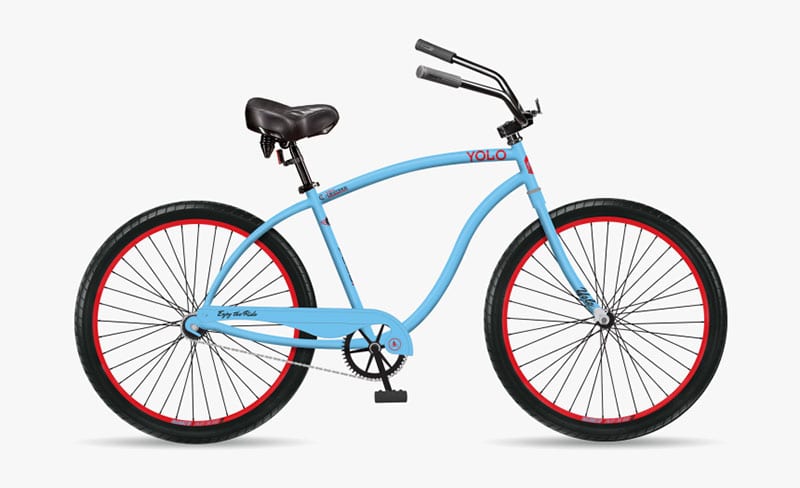
Cruiser bike-Pros:
- Low maintenance bikes
- Comfortable and Relaxed riding
- Easy to fit basket and tracks
- Sturdy basic gearings and frame.
- More variety in stylish models of this bike is available.
Cruiser bike-Cons:
- They are generally heavier and slower.
- Its front basket hinders handling.
How to get the best out of your bikes:
Finally, keep these three points in mind to get the most out of your bikes and enjoy a comfortable safe riding without issues:
- Always Ask Questions: Always ask questions, even the dumbest ones because it should not be an impulse purchase based on recommendations and considerations.
- Come prepared: Always do your research to do justice with your money.
- Ask for the exchange policy and test ride your bike always. If you do not feel comfortable, always request an exchange.
Remember, Looks are not Everything! Always go for a comfortable and quality product.

